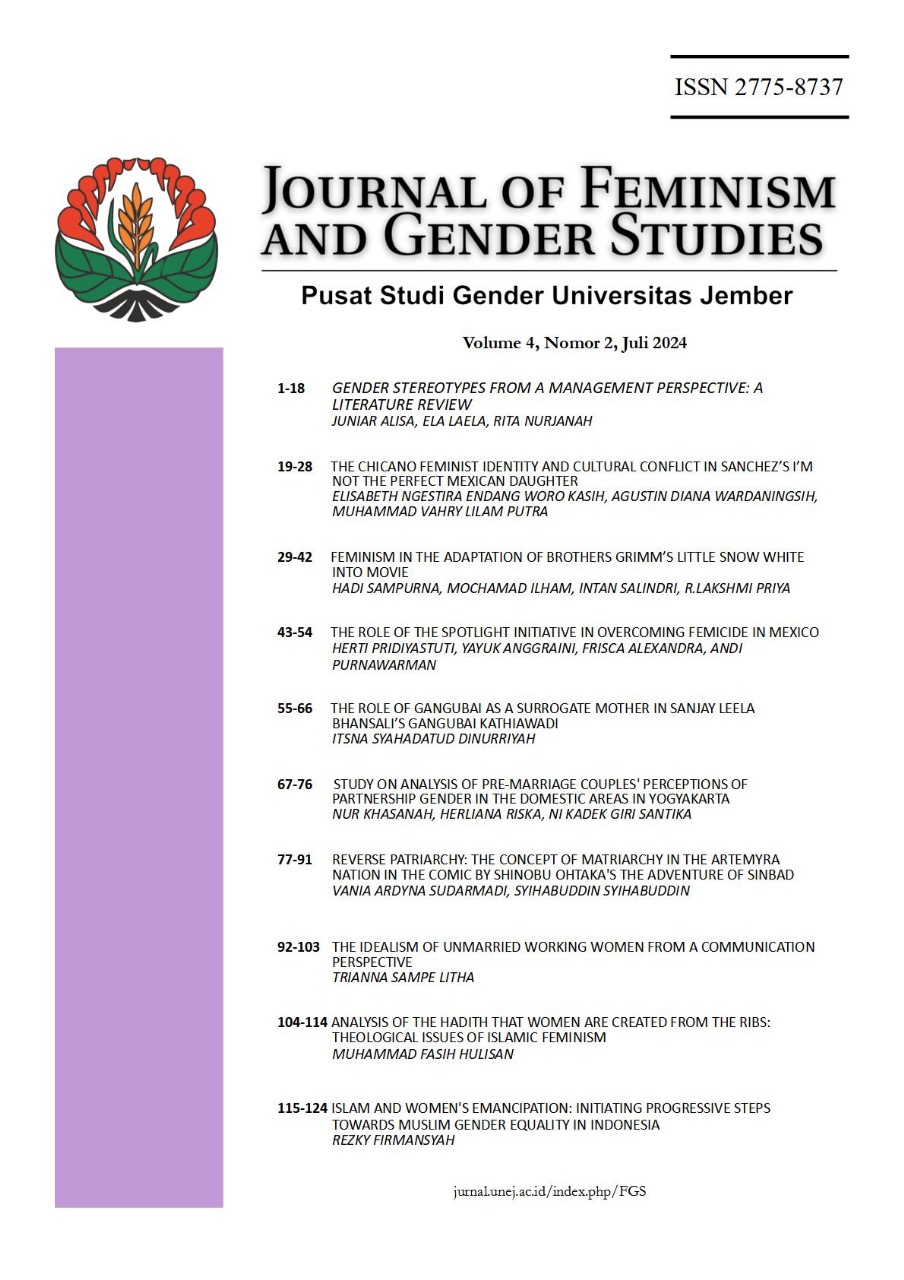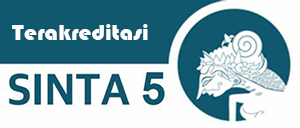Reverse Patriarchy: The Concept of Matriarchy in The Artemyra Nation in The Comic by Shinobu Ohtaka's The Adventure of Sinbad
Abstract
In the social order, there are usually known for two genders that play a role, they are men and women, along with their respective roles in society. In modern society, there are concepts of patriarchy and matriarchy. Patriarchy is a concept that lineage is determined by the paternal line and men have the right to be dominant while women are subordinate. Matriarchy is a concept regarding the prioritisation of women in society by placing women as determinants of lineage and upholding gender equality. The author conducts research related to these two concepts by focusing on understanding the concept of matriarchy in the Artemyra nation in Shinobu Ohtaka's The Adventure of Sinbad comic. The method used in this research is a descriptive method with a qualitative approach. The data source used is The Adventure of Sinbad comic chapters 46, 47, 51, 53, and 54. Based on the results of the analysis, it can be understood that the concept of matriarchy in Artemyra is not a real matriarchy but a reverse patriarchy. Reverse patriarchy, like the concept of patriarchy in general, places one gender in a dominant position. In Artemyra, it is women who dominate the society. Reverse patriarchy has little possibility of happening in modern society because the concept of matriarchy itself upholds gender equality.
References
Anto, R. P., Harahap, T. K., Sastrini, Y. E., Trisnawati, S. N. I., Ayu, J. D., Sariati, Y., Hasibuan, N., Khasanah, U., Putri, N. E. D., & Mendo, A. Y. (2023). Perempuan, Masyarakat, dan Budaya Patriarki (1 ed.). Tahta Media Group.
Azizah, N., Nania, & Rahma, S. R. (2023). Kesetaraan Gender pada Agama Islam. Journal Islamic Education, 1(4), 312–327. https://maryamsejahtera.com/index.php/Education/index
Beti, O., Kolne, Y., & Korbaffo, Y. S. (2024). Ontologi Budaya Patriarki terhadap Konstruksi Sosial Berbasis Gender di Desa Naob, Kecamatan Noemuti Timur, Kabupaten Timor Tengah Utara Tahun 2023. Jurnal Riset Ilmiah, 1(01), 1–5.https://manggalajournal.org/index.php/SINERGI
Fushshilat, S. R., & Apsari, N. C. (2020). Sistem Sosial Patriarki sebagai Akar dari Kekerasan Seksual terhadap Perempuan. Prosiding Penelitian & Pengabdian Kepada Masyarakat, 7(1), 121–127. https://www.komnasperempuan.go.id/reads-
Gottner-Abendroth, H. (2020). Matriarchal Society: Definition and Theory. Dalam The Gift, A Feminist Analysis. https://wunrn.com/wp-content/uploads/013106_matriachial_society.pdf
Indriyani, D., Diana, A., Monica, L., & Zahara, S. R. (2023). Kritik Feminisme dalam Kumpulan Cerpen “Perempuan Bercahaya” Karya Rina Ratih. Jurnal Multidisiplin Indonesia, 1(4), 276–286. https://ejournal.alhafiindonesia.co.id/index.php/JOUMI/article/view/179
Novela, D. A. (2023). Pengaruh Budaya Patriarki Terhadap Partisipasi Politik Perempuan di India: Studi Kasus Mayawati Kunari dan Perjuangannya Melawan Diskriminasi Politik Terhadap Perempuan Dalit. Jurnal Indonesia Sosial Teknologi, 4(7), 818–831. https://doi.org/10.59141/jist.v4i7.651
Rahmania, A. Z., Rosandi, N. S., Fazila, G. A., Fazila, A., & Ananti, V. M. (2023). Pandangan Agama di Indonesia Terhadap Budaya Patriarki dan Dampak Budaya Patriarki terhadap Korban. Jurnal Kajian Islam Kontemporer, 1(1), 1–25.https://doi.org/10.11111/nusantara.xxxxxxx
Rodríguez, J. (2019). The Matriarchal Society and the New Woman in She by H. Rider Haggard. JACLR: Journal of Artistic Creation and Literary Research, 7(2), 108–121. https://www.ucm.es/siim/journal-of-artistic-creation-and-literary-research
Sulistyaningrum, D., Drivoka Sulistyaningrum, S., & Sumarni, S. (2023). A Systematic Review Of “Modern Matriarchy” Featuring The Khasi, The Mosuo, The Bribri, The Minangkabau, The Akana, The Umoja. English Language & Literature International Conference, 5(1), 88–102. https://jurnal.unimus.ac.id/index.php/ELLIC/article/view/12527
Wafa, A. F., Kuswandi, D., & Fattah, Z. W. (2023). Perspective: R.A Kartini and Dewi Sartika in the Field of Education in Today’s Patriarchal Culture. JEEBM, 3(1), 361–378. https://pemudin.com/index.php/JEEBM/article/view/44
Walby, S. (1989). Theorising Patriarchy. Sociology, 23(2), 213–234. https://doi.org/https://doi.org/10.1177/0038038589023002004
Wibawa, G. Y. S., & Widyani, N. (2023). Eksistensi UU Nomer 1 Tahun 1974 Bentuk Perkawinan Matriarki Masyarakat Hindu Bali Ditinjau dari Perspektif Hukum Adat dan Kesetaraan Gender. PARIKSA: Jurnal Hukum Agama Hindu, 7(1), 81–91. https://jurnal.stahnmpukuturan.ac.id/index.php/pariksa/article/view/4226
Yogi Riyantama Isjoni, M., Ikhsan, M., Husni, A. A., Putri, D. N., Tua, D. U., Tricahyani, F., Carriffino, G., Wulandari, L., Travika, N., Husna, N., & Wudda, W. W. (2023). Gender Equality Encouraging Women as Influential and Competitive Leaders. ASPIRASI : Publikasi Hasil Pengabdian dan Kegiatan Masyarakat, 1(6), 135–144. https://doi.org/10.61132/aspirasi.v1i6.88

This work is licensed under a Creative Commons Attribution-ShareAlike 4.0 International License.











